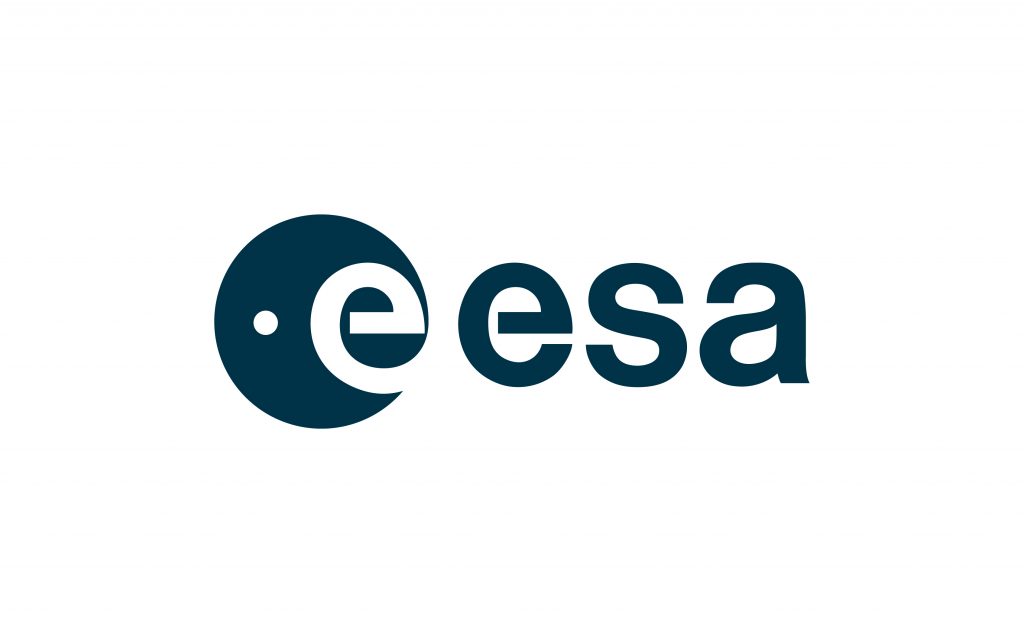In advanced air mobility, communication and marketing are not the same — and the order matters. Electric Air Mobility, LLC explains why starting with a clear, authentic story builds trust and makes marketing work harder, and how our AAM Masterclass helps airport executives prepare for the future of flight.
The Future of AAM Infrastructure Insights from Rex Alexander — Part 2
On The Ways We Move podcast, guest Rex Alexander talks about how advanced air mobility (AAM) infrastructure is changing how we see and conceptualize urban air mobility (UAM) and regional air travel, challenges, regulatory updates. Most importantly, a strong, safe, and robust infrastructure will allow for a cleaner and more efficient future of air travel. Find out more about what the future of air travel looks like from Mr. Infrastructure himself!
AAM News: What Happened This Week
This week in advanced air mobility: Deutsche Aircraft unveils the D328eco test aircraft, Airbus faces ongoing delivery delays, and the Paris Air Show 2025 spotlights the latest in sustainable aviation and eVTOL innovation.
The Ways We Move, Leo Flight, Quietly Revolutionizing eVTOLs
Leo Flight is pioneering high-efficiency electric jet propulsion for eVTOLs, offering unmatched speed, range, and quiet operation. Their technology could transform urban air mobility, cargo drones, and defense applications. Learn how this U.S.-based innovator is pushing the boundaries of electric flight.
Cork: The Up-and-Coming Hero of Sustainable Innovative Mobility
There are more solutions than obstacles. Nicolas Zart
Donald Thomas, NASA Astronaut, famously says: “Never leave Earth without cork.” And he makes a point of it. Yet most of us know cork as the humble stopper in wine bottles—tossed aside without a second thought. But did you know that this 5,000-year-old material shields spacecraft, silencing EVs, and even protects eVTOL batteries from fire, EMFs, and more?
From NASA’s Mars landers to electric vehicles (EVs) interiors, cork is revolutionizing innovative mobility. So, pun intended, let’s uncork its potential.

From Earth to Space
From NASA to the European Space Agency (ESA), the latter’s IXV mission marked a turning point for cork. As Jean-Jacques Dordain, ESA’s former Director-General, noted, cork was critical for the Ablative Thermal Protection System during re-entry. See Amorim, 2015.

And this is how it works. The Portuguese cork leader, Amorim Cork Composites, partnered with Thales Alenia Space to develop the P50 cork, a silicone-cork hybrid to shield antennas and electronics from EMI. This composite can withstand up to 2,200°C (3992°F ) during atmospheric re-entry.

But back on Earth, cork is applied to EVs, electric Vertical Take-Off and Landing (eVTOLs), and Beyond. With EVs, Tesla and other EV makers use cork-polymer composites for dashboards, door panels. Cork is 50% lighter than synthetics with a much better carbon footprint. It is also ideal for acoustic insulation, reducing noise by as much as 30% than synthetic alternatives.
On a personal note, I was one of the first EV journalists to test the BMW electric i3 in 2014. I remember being impressed by the cork-trimmed interior as a way to show that ‘eco-luxury’ wasn’t an oxymoron.
Slightly back up with Advanced Air Mobility (AAM), cork is an ideal material to help with fireproofing. Its stable make-up makes it ideal for eVTOLs for their battery shielding. It can withstand fires up to 1,200°C or 392°F. It is also ideal for vibration damping, which is so critical for organ transport, especially as we now turn our attention to drones. This extends to other industries, such as rail and maritime. Cork-rubber mounts dampen vibrations in high-speed rail and on sea vessels. Airbus uses it as cryogenic insulation for its hydrogen fuel system testing.
Cork’s Superpowers By the Numbers
| Property | Value | Outperforms |
|---|---|---|
| Thermal Conductivity | 0.04 W/m·K | Fiberglass (0.05 W/m·K) |
| EMI Shielding | 60–80 dB attenuation | Most plastics |
| Sustainability | 100% biodegradable | Aluminum/synthetics |
Source: Fraunhofer Institute, 2023
The Cork Sustainability Prowess
After a devastating 2011 fungi attack, Amorim doubled down on R&D and today proved through this study that cork stoppers are 25% more sustainable than aluminum and synthetics. The Corticeira Amorim’s study, (“Analysis of the life cycle of Cork, Aluminum and Plastic Wine Closures”), developed by PricewaterhouseCoopers, concluded that, “concerning the emission of greenhouse gases, each plastic stopper released 10 times more CO2, whilst an aluminium screw cap releases 26 times more CO2 than does a cork stopper. For example, to produce 1,000 cork stoppers 1.5 kg CO2 are emitted, but to produce the same amount of plastic stoppers 14 kg of CO2 are emitted and for the same amount of aluminium screw caps 37 kg CO2 are emitted.”

And with zero waste, 70% of Amorim’s energy comes from cork byproducts. Cork’s carbon-negative footprint means cork oak forests absorb 14M tons/year of CO₂.
Today, NASA’s Artemis Program is testing cork for lunar habitat insulation. Even MIT is embedding sensors with cork for real-time battery health monitoring.
Cork reminds us that sometimes, the best solutions aren’t invented. Earth has fashioned them for millions of years. So next time you pop a bottle, take a moment to remember that this ‘humble’ material is shielding a spacecraft, satellites, EVs, and your future eVTOL.”
🔗 Further Reading:
Here is the video of the article.
From Wine Bottles to Spacecraft: Cork’s Silent Revolution in Mobility!
In this episode of The Ways We Move, Nicolas Zart uncorks the untold story of a material quietly reshaping sustainable mobility—from NASA’s Mars landers to BMW’s electric vehicles, rail, maritime, and more.
🔊 Key Insights:
Space-Tested: How cork shields spacecraft during re-entry (and why NASA is eyeing it for lunar habitats).
EV Revolution: Cork’s role in lightweighting and soundproofing electric vehicles.
Carbon-Negative: Why harvesting cork saves forests and outperforms aluminum/plastic.
Future Frontiers: Cork’s potential in Advanced Air Mobility (AAM) and beyond.🕒 Chapters:
00:00 – Cork’s Ancient Legacy Meets Modern Mobility
02:49 – NASA, ESA, and the Space-Grade Cork Revolution
05:34 – How BMW and Tesla Are Using Cork Today
10:57 – Why Cork is the Ultimate Sustainable Material
14:41 – What’s Next? Cork in eVTOLs and Lunar Base
You can listen to the podcast here.
▶️ Watch on YouTube: https://www.youtube.com/@TheWaysWeMove 📺
🔊 Apple Podcasts: https://podcasts.apple.com/ca/podcast/the-ways-we-move/id1797599255 🔊
🎙️ Amazon Podcasts: https://music.amazon.com/podcasts/cd3349e1-275f-4691-ae38-f1b6a153d5e5/the-ways-we-move 🎙️
🎧 Listen on Spotify: https://open.spotify.com/show/4V0qe3eZqublwn6dasXWCf 🎧
📻 iHeart Radio: https://www.iheart.com/podcast/269-the-ways-we-move-268614085/ 📻
🌱 Buzzsprout: https://thewayswemove.buzzsprout.com/ 🗣️
📢 Subscribe for more insights into the future of mobility and support the show! https://www.buzzsprout.com/2428454/supporters/new 📡
Clarification: This is not paid advertising for Amorim. It just happens that the company is at the forefront of cork technology.
What is Advanced Air Mobility (AAM)? A Once-in-a-Lifetime Revolution
Discover how Advanced Air Mobility (AAM) evolved from the 1950s dream of urban air mobility (UAM) into a transformative solution for efficient, sustainable, and inclusive air transportation, powered by cutting-edge technology and infrastructure.
The Nuclear Energy Revolution for AAM
Small Modular Reactors and Micro-Reactors offer transformative potential for Advanced Air Mobility (AAM) vertiports, providing sustainable, scalable, and cost-efficient energy solutions that address the growing demands of electrified aviation.
2024: A Year in Advanced Air Mobility Review
Reflecting on 2024, the Advanced Air Mobility sector experienced pivotal mergers, faced financial challenges, achieved certification milestones, made technological breakthroughs, and advanced infrastructure developments, setting the stage for future advancements.
Sommet 2024 de l’AAM au Portugal : La nouvelle plaque tournante de l’innovation et mobilité durable
Le sommet AAM 2024 au Portugal a réuni des leaders mondiaux pour explorer le rôle de la mobilité aérienne avancée dans le développement urbain durable et l’innovation. Le Portugal se positionne comme un banc d’essai et un incubateur international de l’AAM 🚁✨.
Portugal’s AAM Summit 2024: The New Hub for Innovation and Sustainable Mobility?
The AAM Summit 2024 in Portugal brought together global leaders to explore advanced air mobility’s role in sustainable urban development and innovation. Portugal is positioning itself as an international AAM testbed and incubator 🚁✨









